The Most Expensive Metals to Trade in 2025
What comes to your mind when you hear about the most expensive metals in the world? We bet a lot of people would think about gold, silver, or platinum first. Well, guess again.


The well-known precious metals are somewhere in the middle of the list by their value in the commodity market.
The price of precious metals usually depends on their rarity, properties, the extraction process, application areas, and demand. And if scarcity is always constant, all of the other aspects commonly depend on new technologies, political or economic situations, and other issues.
So, today we are going to talk about the most valuable metals traded in the commodity market. The rating is based on their price per kg and is relevant for the 11th of March 2023.
Here Are the Top Seven Most Expensive Precious Metals in the Commodity Market
Rhodium

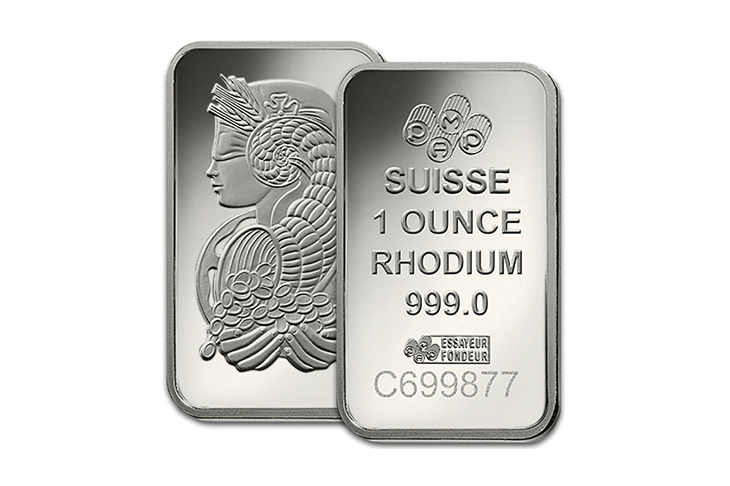
ISO currency code: XRH.
Annual production: about 30 tonnes.
Major producers: About 80% is mined in South Africa. Others are Russia, Zimbabwe, Canada, United States, Colombia, Botswana, Finland.
Rhodium is the most expensive precious metal of the platinum group traded in the commodity market. Today, it costs more than $650 thousand per kg, which is about four times more than the price of gold and almost ten times more than the price of platinum. The reason for such a high value is the wide-ranging applications and the great scarcity of the metal.
For a quick comparison, gold deposits are four times greater, and platinum deposits are five times greater than those of rhodium.
This metal is commonly used in the lighting industry, mirror production, and even in nuclear reactors. It is also known as a scratch-resistant finish for jewelry, especially for "white gold".
But almost 80% of the demand for rhodium comes from the automotive industry. The metal is used in headlight reflectors and catalytic converters, which helps reduce toxic gas emissions and pollutants. The reason is that the element filters nitrogen oxides better than palladium or platinum and is easier to install.
Rhodium, as an investment option, didn't exist until 2009. But today, you can easily invest in this metal. And, considering the increasing interest of the car industry, it might be a pretty good idea.
Iridium

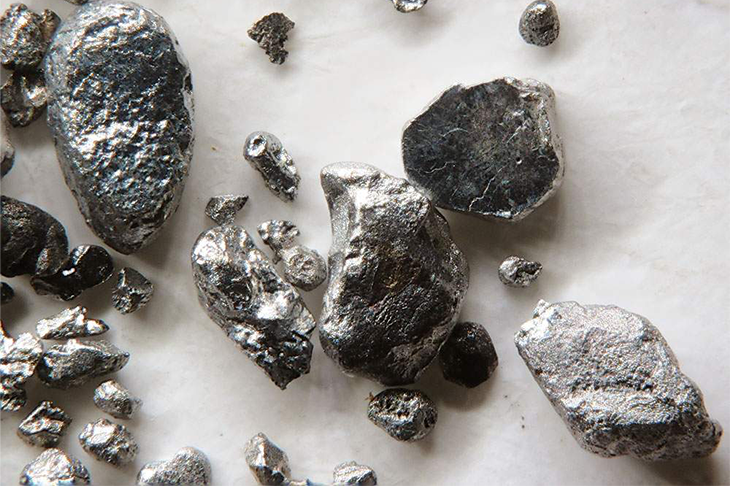
Annual production: about 3 tonnes.
Major producers: Brazil, United States, Myanmar, South Africa, Russia, Australia.
Iridium is the second most valuable metal on the commodity market and, at the same time, one of the rarest metals of the platinum group on earth. Its price depends not only on relatively small volume but also on difficulties in production, demand, market speculations, politics in the producing countries, and technology development.
Due to its hardness, iridium is perfect as a hardening agent for alloys, which are used to produce aircraft engine parts and deep-water pipes.
Iridium is usually used in metallurgy, medicine, automotive, electronics, aviation, and other sectors. Such products as pen tips, bearings and balances for compasses, surgical instruments, computer memory devices, solid-state lasers, low-thrust rocket engines are made of this metal. It can even be used in the treatment of cancer.
As iridium is considered a minor element, very few people invest in it. The best way to enter this market is to trade the producing companies' stocks or to invest in special funds.
Gold

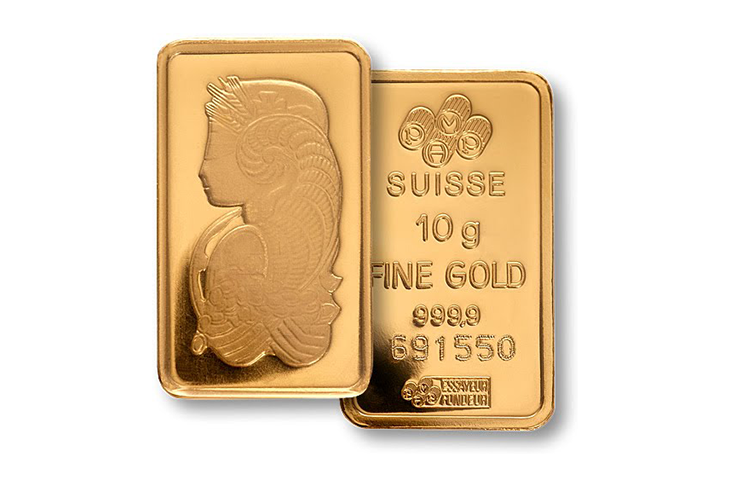
ISO currency code: XAU.
Annual production: about 2,500-3,000 tonnes.
Major producers: China, Australia, Russia are the top three. Others are United States, Canada, Peru, Indonesia, Ghana, South Africa, Mexico, etc.
Gold takes the fourth place as the most valuable precious metal in the commodity market. But it is the most popular investment instrument mostly due to its long history and stability, especially in times of war or crisis.
Through centuries, this metal has been an actual currency for many countries. It was a significant sign of wealth and power. So, there has always been a demand and a market for gold.
The metal is used for electronics, aerospace equipment, medical and dental implants, and even in some medicines. But still, its main applications are jewelry and trading.
Today, gold is considered the most popular safe haven and hedge investment option. Interestingly, its price usually goes up when the US dollar becomes weaker. This is because many investors switch to the metal at the currency's hard times, as it is an excellent hedge against devaluation.
Nowadays, the price of gold depends not only on its rarity and practical applications but also on market conditions and demand, driven mainly by jewelry, medicine, and precision electronics industries.
Palladium

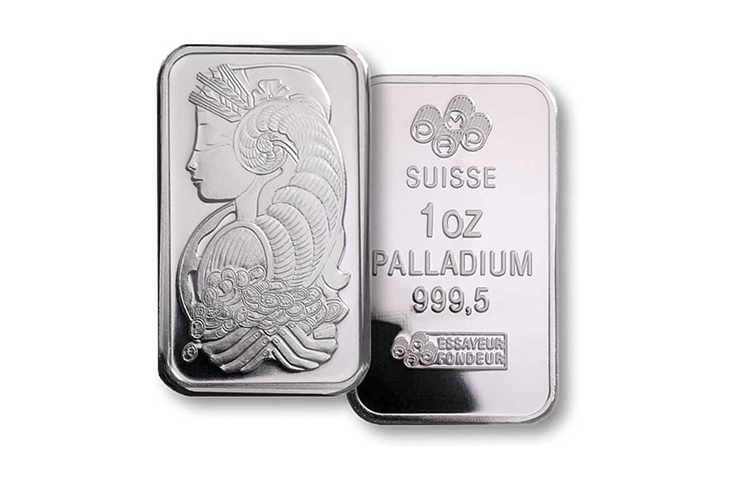
ISO currency code: XPD.
Annual production: about 200 tonnes.
Major producers: Russia is the top producer. Others are South Africa, United States, Canada and Zimbabwe.
Palladium is the third costliest metal in the commodity market. It is about 30 times rarer than gold or platinum, which makes it more valuable.
This element is one of the biggest rhodium competitors in the car industry, as it is also often used for catalytic converters in diesel vehicles. Both these metals convert about 90% of the harmful gases in automobile exhaust into less toxic substances.
As in the case of rhodium, palladium gained its popularity after the Dieselgate scandal in 2018. Before that, its price was much lower than that of gold or platinum.
This element is also highly valued in aerospace, navigation, aviation, weaponry, dentistry, medicine, electronics, and nuclear energy. It is used for "white gold" alloys as well.
Just like gold, palladium is considered an attractive inflation hedge and a safe haven. Additionally, as with rhodium, it is essential for the automotive industry, which may guarantee a continuously growing market.
Platinum

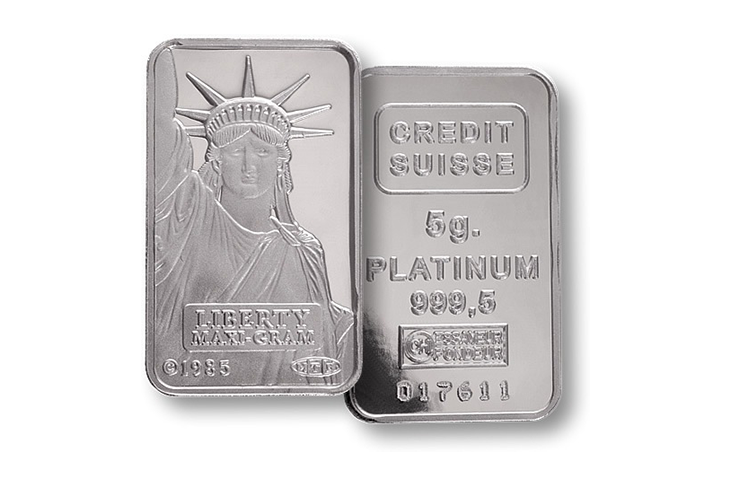
ISO currency code: XPT.
Annual production: about 160 tonnes.
Major producers: South Africa is the main producer. Others are Russia, Zimbabwe, Canada, United States.
Today, we know platinum as one of the world's most valuable metals. But it wasn't always so. At first, people considered it to be poor-quality silver and used it to fake jewelry.
Over time we understood that platinum is much rarer than gold and became a sign of an even higher prestige level.
Limited and expensive edition series of jewelry and watches, highly-privileged credit cards, the highest rewards are usually named "Platinum". And even though today gold is more costly and has more application areas, platinum holds its status as the wealth sign.
Until 2018 platinum was widely used for catalytic converters in diesel vehicles. But after Dieselgate, the automotive industry prefers palladium and rhodium as they are more effective.
Among other industries, which use this metal, are dentistry, weaponry, aeronautics, computers, medicine, glassmaking, etc. Such things as laboratory equipment, anticancer drugs, hard disk drives, spark plugs, turbine engines involve platinum. But it is mostly used for jewelry or as an investment instrument.
Platinum has a smaller market than gold, but the number of interested investors continues growing.
It is one of the most volatile precious metals. During periods of economic stability and growth, its price tends to be as much as twice the price of gold. But during uncertain times, the value of platinum tends to decrease, falling below the price of gold.
Ruthenium

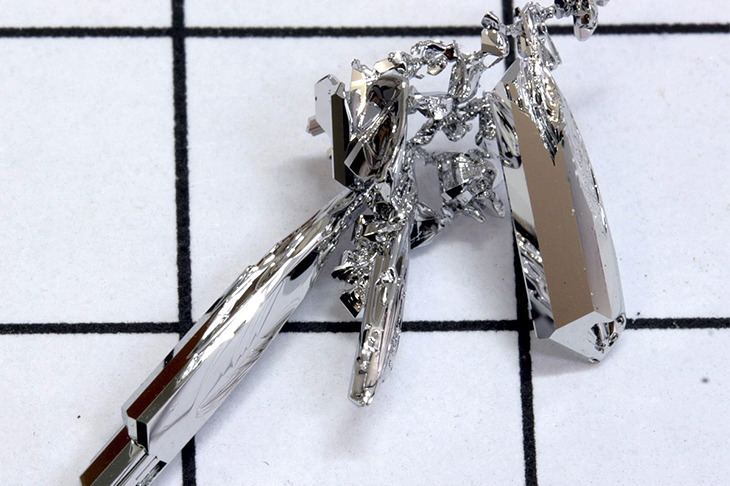
Annual production: about 30 tonnes.
Major producers: Russia, North and South America, Canada, South Africa.
Ruthenium also belongs to the platinum group and is one of the rarest, making it pretty expensive. But as its usage is lower than other PG metals, its market is much smaller.
Mainly, ruthenium is used in electronics. Being cheaper than rhodium and having very similar properties, it is usually used for electric contacts, wires, and electrodes production. It also serves as a catalyst in electrochemistry.
A lot of manufacturers use it as a strengthening element for platinum or palladium alloys to improve their properties. A few interesting utilization areas for ruthenium are radiotherapy in medicine, exposure of latent fingerprints, and fountain pen nibs production.
And soon, the price of the metal may get even higher. Today the scientific community actively researches its ability to absorb light to help develop new low-cost solar energy systems.
Silver

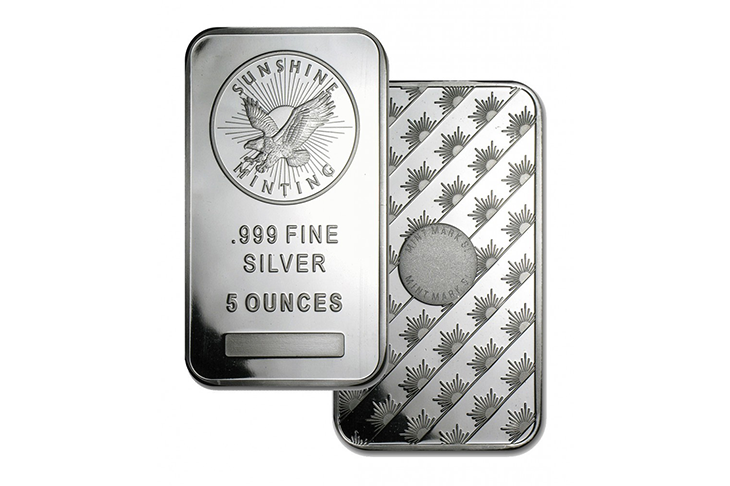
ISO currency code: XAG.
Annual production: about 40,000 tonnes.
Major producers: Mexico, Peru, China, Russia, Poland, Chile, Bolivia, Australia, United States.
Silver has a very similar history as gold. Just like its "big brother", it is a safe haven investment and a pretty popular one, as it retains its value regardless of any crisis. But the deposits of silver are relatively more extensive than those of gold, which makes it much cheaper.
Silver is usually traded at a fraction of the gold price. Some even trade the spread between gold and silver prices.
Unlike gold, silver is more volatile, as it gained recognition in the industrial world over a few last years.
It is used in rockets, submarines, nuclear devices production, computers, jewelry, circuits, photography, dentistry and medicine, batteries, solar panels, water filtration, and much more. Among useful properties of silver are also odor control and preventing the spread of bacteria.
Some other precious metals have similar properties. But their markets are small, and they might have limited investment options. Here is some short info:
| Name | Approx. Price/kg | Annual Production | Major Producers | Applications |
|---|---|---|---|---|
| Osmium (Os) | $12,860 | 1 tonne | Russia, Canada, South Africa, United States | Fountain pen tips, record player needles, electrical contacts, fingerprint detection, optical microscopy, surgical implants, measuring devices |
| Rhenium (Re) | $4,150 | 50-60 tonnes | Chile, Poland, United States, Uzbekistan, Kazakhstan | Energy, electronics, heating elements, turbines, aerospace, metallurgy, aircraft |
| Scandium (Sc) | $3,460 | 15-20 tonnes | Ukraine, China, Russia, Kazakhstan, Australia | Research, fighter planes, bicycle frames, baseball bats, mercury vapor lamps, rockets, robots, lasers, satellites, aircraft |
| Indium (In) | $260 | 100,000 tonnes | China, South Korea, Japan, Belgium, France | Touch screens, flatscreen TVs, solar panels, transistors, microchips, windows mirror finish, fire-sprinkler systems, aircraft engines |
What Are the Base (Industrial) Metals?
There are two types of metals usually traded in the commodity markets:
- Precious/noble metals (presented above), which are rare, expensive, have a high industrial value because of their properties and can be a great investment option.
- Base or industrial metals are commonly used in industrial applications, construction, and manufacturing. They are much cheaper and widely spread in everyday items, therefore in high demand in global markets.
Although the value of base metals is much lower than that of precious, the demand in their case is pretty high. So investors might want to consider adding those to their portfolio.
Here is some short info on the base metals traded in the commodity market:
| Name | Price/kg | Annual Production | Major Producers | Applications |
|---|---|---|---|---|
| Cobalt (Co) | $70 | 140K tonnes | Congo, China, Canada, Russia, Australia | Alloys, magnets, magnetic recording media, catalysts, drying agents for paints and inks, etc. |
| Molybdenum (Mo) | $45 | 250K tonnes | China, Chile, United States, Peru, Mexico | Alloys, military armor, aircraft parts, electrical contacts, industrial motor, light bulbs filament, fertilizer, etc. |
| Tin (Sn) | $41 | 300K tonnes | China, Indonesia, Bolivia, Peru, Brazil | Alloys, metal coating, foil, collapsible tubes, solder, etc. |
| Nickel (Ni) | $22 | 2.7 mln tonnes | Indonesia, Philippines, New Caledonia, Russia, Australia | Stainless steel, electronics, plating, catalysts, rechargeable batteries, etc. |
| Copper (Cu) | $10 | 19.9 mln tonnes | Chile, Peru, United States, China, Congo | Electrical wiring, plumbing fixtures, transportation equipment, electric equipment, electronics, industrial equipment, etc. |
| Zinc (Zn) | $3.54 | 13.2 mln tonnes | Australia, Peru, United States, China, India | Alloys, paints, rubber, cosmetics, pharmaceuticals, plastics, inks, soaps, batteries, textiles, electrical equipment, fluorescent lights, x-ray screens, etc. |
| Aluminum (Al) | $2.95 | 60 mln tonnes | China, Russia, India, Canada, UAE | Aerospace, cans, automobiles, construction, electrical wiring, appliances, foil, packaging, etc. |
| Lead (Pb) | $2.30 | 11.6 mln tonnes | China, Australia, United States, Peru, Mexico | Batteries, protective shielding, ammunition, industrial sheets, etc. |
| Iron (Fe) | $0.13 | 2.5 bln tonnes | Australia, Brazil, China, India, Russia | Steel production, reinforced concrete, girders, pipes, valves, pumps, magnets, etc. |
How to Trade Metals in the Commodity Market?
All of the metals presented above are often considered very popular investment options, as they carry no credit risks and cannot be inflated. They hold their value better than money, especially in times of financial, political, or military crises.
On the other hand, the value of metals can significantly drop during times of economic certainty. Supply issues may also influence their value a lot. Besides, it is sometimes quite a challenge to find a buyer for physical metals if you have those.
There are a few ways an investor can gain access to the metal commodity market:
- Owning physical metal (bullion, coins, or bars);
- Commodity ETFs;
- Stocks of the miner companies and mutual funds;
- Futures and options;
- Certificates.
So, what is the most expensive metal in the world?
Precious metals, as rhodium, gold, platinum, and others are the most valuable elements widely used in industrial fields and actively traded in the commodity markets. But in reality, they are not the costliest on earth.
Have you ever heard of californium? Its price reaches about $27 million per gram.
Despite such great value, it is of little interest, highly radioactive, and extremely dangerous. Besides, this is an artificial metal, which is not that easy to manufacture. Only 30-40 micrograms of californium are produced annually in Russia and the United States.
It is mainly used in nuclear physics and power generation and sometimes in medicine for tumors treatments. Occasionally, it replaces X-rays to detect damages in the reactors or aircraft constructions as it is more efficient in this case.
And that's only one example. Let's not forget that there are such elements as polonium or plutonium, which are also metals. Their price may reach tens of billions of dollars.
You may also like these articles:
- Most Trendy Currency Pairs
- The Top 5 Most Traded Currencies in the World
- The Most Traded Currency Pairs in Forex
- TOP 10 – The Most Expensive World Currencies












